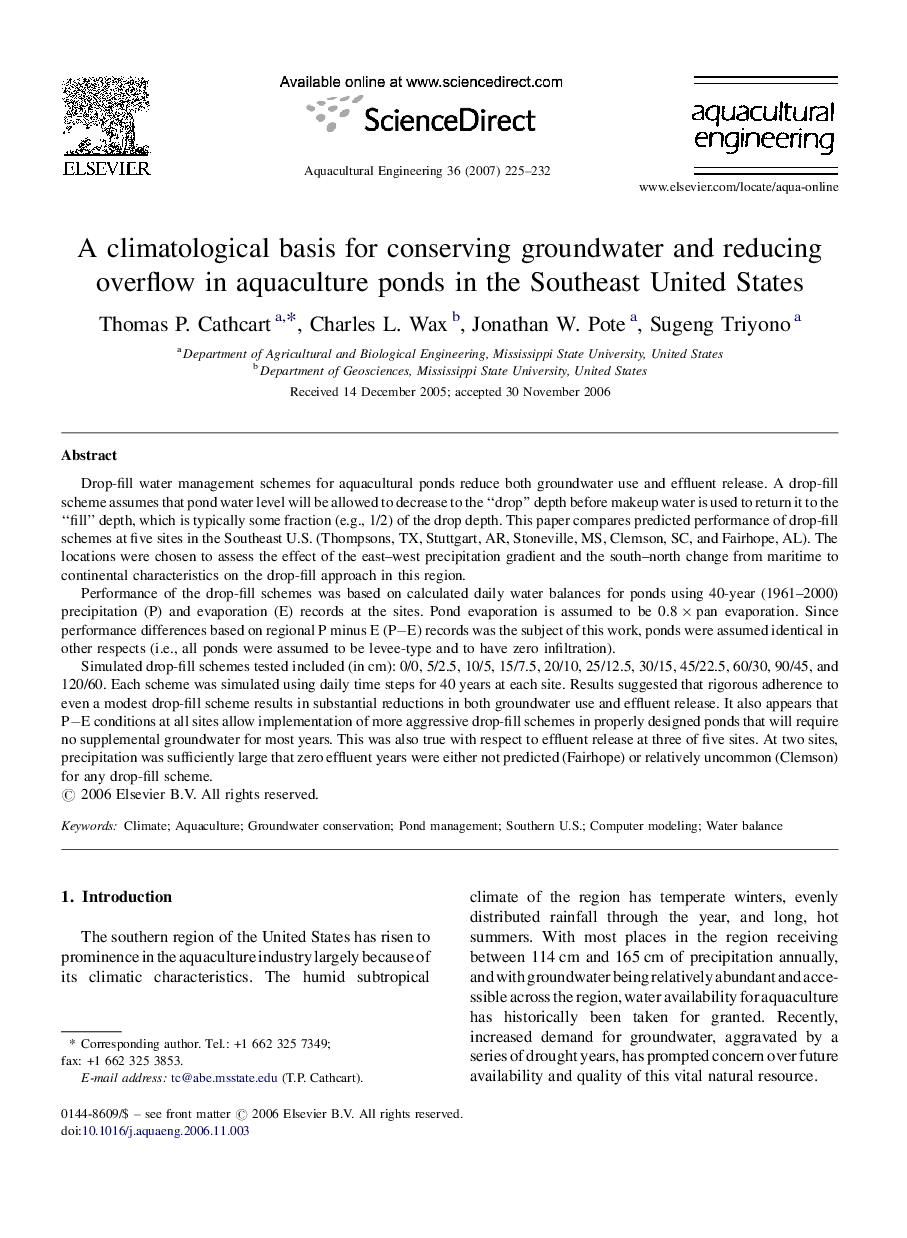| کد مقاله | کد نشریه | سال انتشار | مقاله انگلیسی | نسخه تمام متن |
|---|---|---|---|---|
| 4527424 | 1324104 | 2007 | 8 صفحه PDF | دانلود رایگان |

Drop-fill water management schemes for aquacultural ponds reduce both groundwater use and effluent release. A drop-fill scheme assumes that pond water level will be allowed to decrease to the “drop” depth before makeup water is used to return it to the “fill” depth, which is typically some fraction (e.g., 1/2) of the drop depth. This paper compares predicted performance of drop-fill schemes at five sites in the Southeast U.S. (Thompsons, TX, Stuttgart, AR, Stoneville, MS, Clemson, SC, and Fairhope, AL). The locations were chosen to assess the effect of the east–west precipitation gradient and the south–north change from maritime to continental characteristics on the drop-fill approach in this region.Performance of the drop-fill schemes was based on calculated daily water balances for ponds using 40-year (1961–2000) precipitation (P) and evaporation (E) records at the sites. Pond evaporation is assumed to be 0.8 × pan evaporation. Since performance differences based on regional P minus E (P−E) records was the subject of this work, ponds were assumed identical in other respects (i.e., all ponds were assumed to be levee-type and to have zero infiltration).Simulated drop-fill schemes tested included (in cm): 0/0, 5/2.5, 10/5, 15/7.5, 20/10, 25/12.5, 30/15, 45/22.5, 60/30, 90/45, and 120/60. Each scheme was simulated using daily time steps for 40 years at each site. Results suggested that rigorous adherence to even a modest drop-fill scheme results in substantial reductions in both groundwater use and effluent release. It also appears that P−E conditions at all sites allow implementation of more aggressive drop-fill schemes in properly designed ponds that will require no supplemental groundwater for most years. This was also true with respect to effluent release at three of five sites. At two sites, precipitation was sufficiently large that zero effluent years were either not predicted (Fairhope) or relatively uncommon (Clemson) for any drop-fill scheme.
Journal: Aquacultural Engineering - Volume 36, Issue 3, May 2007, Pages 225–232